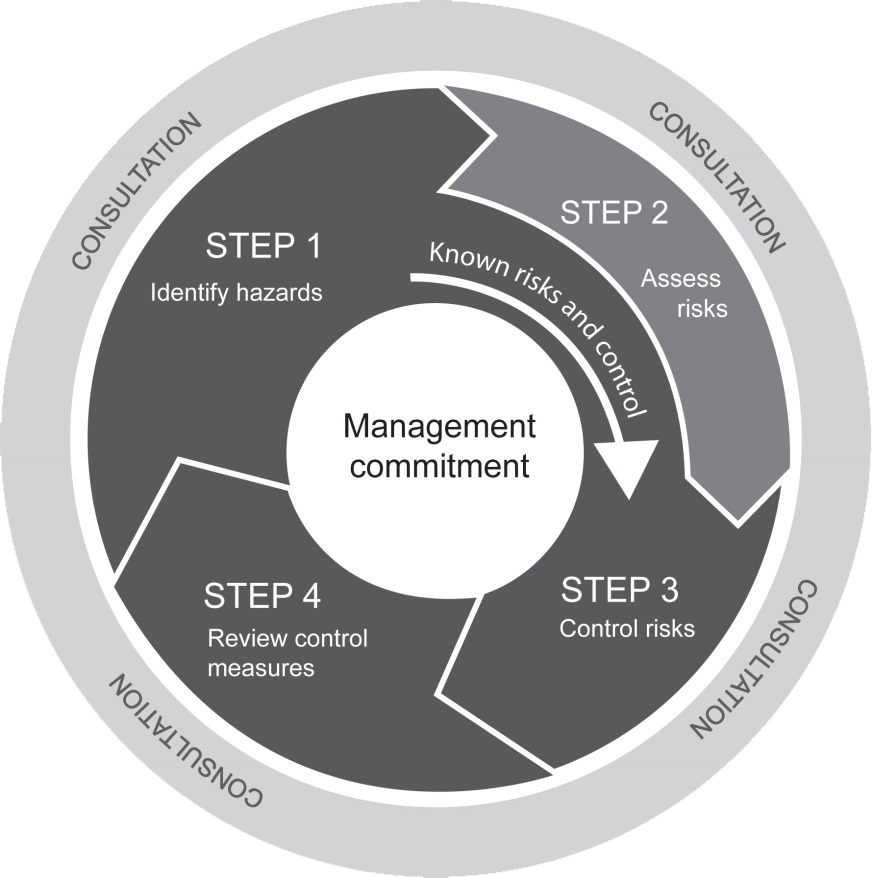How to identify workplace hazards and perform a risk assessment

If you are managing a business, you are legally required to identify any hazards and perform risk assessment associated with those hazards that workers may encounter.
A hazard is as a task, application, tool, environmental condition or otherwise that has the potential to cause harm. For example, these can be an angle grinder, working at heights, loud noises, chemicals, a bully, stress, fatigue etc.
A risk is the likelihood that a hazard will harm someone (eg death, injury or illness) when exposed.
There are four steps to managing workplace health and safety (WHS) risks. Firstly, it begins with a hazard as well as risk assessment and followed by implementing control measures using the hierarchy of control. Afterwards, reviewing the effectiveness of those controls This article will focus on steps one and two, the hazard identification and risk assessment processes.
Step 1) Identify Hazards: What could cause harm?
Some hazards will be easier to identify than others because they are common in a particular industry. Others may be more difficult to identify, according to Safe Work Australia. The safety body encourages consulting workers and systematically analysing all tasks to help identify any potential hazards.
Encouraging hazard reporting will help the hazard identification process as many workers ignore safety issues due to a perceived lack of support from management.
Incident records and investigations, near misses, health monitoring and inspection results will all help identify types of hazards in the workplace. If something cause injury to someone, then a hazard exists, which could also hurt someone else.
Hazards usually arise from:
- The physical work environment
- equipment, materials and substances used
- work tasks and how they are performed
- work design and management.
Step 2) Assess Risks: Understand what harm a particular hazard could cause, the likelihood of it occurring and how serious it could be.
According to Safe Work Australia, it is mandatory to carry out a risk analysis for high risk activities. This includes entry into confined spaces, diving work and live electrical work.
They state that a risk assessment can help determine:
- how severe a risk is
- whether any existing control measures are effective
- what action you should take to control the risk
- how urgently the action needs to be taken.
Risk evaluation will give insight into how hazards might cause an injury or illness, how different hazards interact with each other, or how workplace changes might impact the effectiveness of existing control measures.
Moreover, the detail of the risk assessment will depend on the type of hazard and the information you have available. Safe Work Australia states it might be a simple discussion with workers. They may also require an OHS officer or other safety professional to analyse.
Then, with a detailed understanding of the hazards that exist and the risks associated with those hazards, you must now set about controlling those hazards using the Hierarchy of Control.








































































